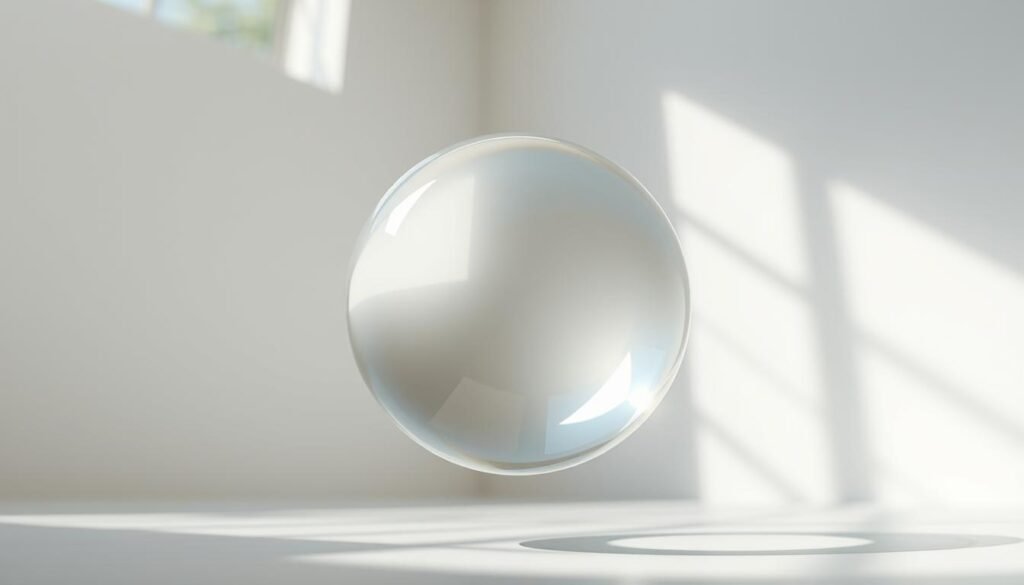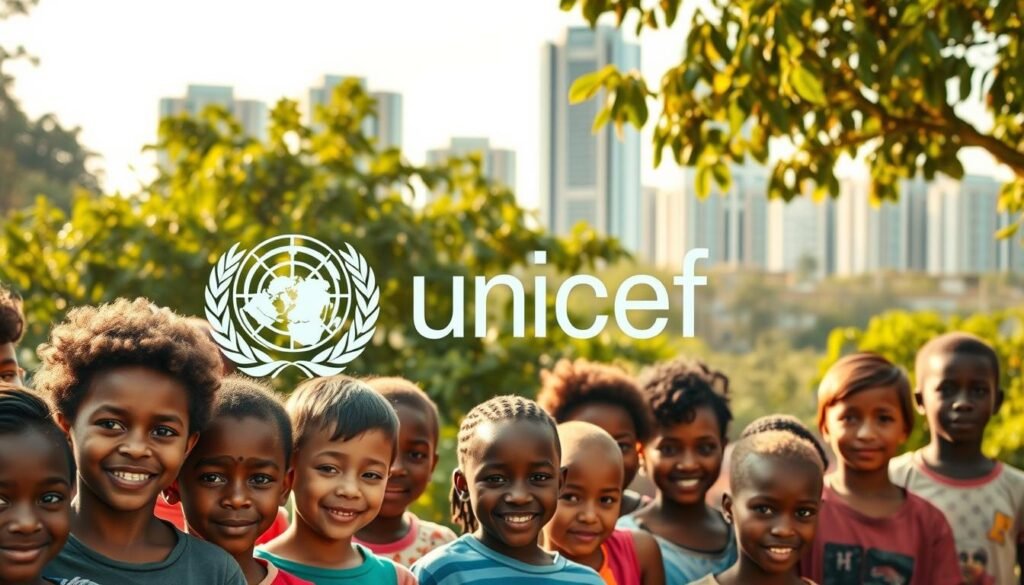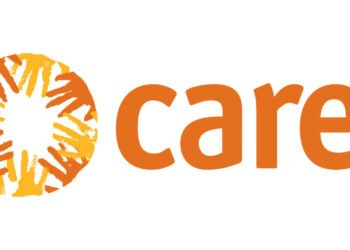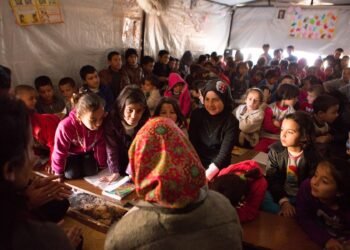One surprising fact: this United Nations agency reaches children in 192 countries and territories, serving millions through health, education, and emergency programs.
Founded on December 11, 1946, the United Nations Children’s Fund took a new name in 1953 but kept its familiar acronym. Today it operates from New York City under Executive Director Catherine M. Russell.
The organization runs field offices, regional hubs, and partnerships to deliver immunizations, nutrition, sanitation, HIV treatment, and education where kids live and learn.
Supported entirely by voluntary contributions, the agency counted 15,654 staff in 2022. That backbone enables rapid emergency relief and long-term programs that show measurable impact.
This Ultimate Guide will give clear, data-informed information on governance, funding, field operations, and program outcomes. It points readers in the United States to the official website and ways to engage with this mission-driven charity.
Key Takeaways
- This United Nations agency supports children’s rights and well-being worldwide.
- Established in 1946, it has more than 78 years of continuous service.
- Operations span 192 countries with a staff of over 15,000.
- Programs include immunization, nutrition, education, protection, and emergencies.
- Funding is fully voluntary; transparency and impact are central to its work.
- Readers can find more information and get involved via the official website.
Executive Summary: Why UNICEF Matters Right Now
Children face preventable disease, malnutrition, unsafe water, and disrupted schooling across the globe. This organization combines rapid emergency response with long-term development to meet those needs where they occur.
Operating in 192 countries and territories, the agency delivers immunizations, HIV services, nutrition, sanitation, education, and emergency relief. In 2024 total income reached $8.61 billion, with $4.92 billion from public-sector partners. Diverse donors sustain programs that save lives and build systems.
Evidence-based programs guide field work and align with united nations priorities and global policy goals. The executive board oversees strategy and reporting, keeping efforts accountable to measurable child outcomes.
Early investment in health, nutrition, learning, and protection drives human development and reduces long-term costs. For up-to-date information, program reports, and ways to help, visit the official website to explore current priorities and donor options.
What Is UNICEF? Mission, Mandate, and Present-Day Scope
Mission: Created to help mothers and children after World War II, this agency now delivers both humanitarian aid and long-term development for young people worldwide.
From Emergency Relief to a Permanent United Nations Children’s Fund
Initially set up in 1946 to provide emergency relief, the body expanded its mandate in 1950 to include lasting development for women and children.
In 1953 it became a permanent part of the united nations system under the name United Nations Children’s Fund while keeping the familiar acronym.
Early ideas about sustainable financing, including the Rajchman “health tax” proposal, shaped thinking about how to fund child health over the long term.
Operating in 192 Countries and Territories Today
Today the organization works in 192 countries and territories through a field-based model of 150 country offices, seven regional hubs, and 34 national committees.
Core programs cover health and immunization, hiv prevention and treatment, nutrition, WASH, education, and child protection.
National committees act as charities that raise funds and mobilize public support while country teams align workplans with government priorities.
UNICEF Governance and Leadership
A centralized administrative hub in New York guides global strategy and daily management for programs that serve children. Catherine M. Russell leads as Executive Director from headquarters, coordinating staff, country teams, and partner relations across regions.
Executive Director and Headquarters
The Executive Director heads the organization’s leadership and ensures programs remain evidence-based and child-centered. Headquarters in New York houses core management, finance, and policy teams that support field operations.
36-Member Executive Board
A 36-member Executive Board — elected by ECOSOC — sets policy, approves programs, and signs off on budgets and administrative plans. The board’s bureau includes a president and four vice-presidents from different regional groups, with the presidency rotating annually.
Customary governance norms prevent permanent UN Security Council members from serving as board officers. Board members conduct field visits and review reports to align policy with on-the-ground realities.
The board’s secretariat ensures timely information flow between management and members. This structure promotes transparency, fiscal responsibility, and sustained trust among donors and charities.
Aid Transparency, Sources of Funds, and Donor Confidence
Donor trust hinges on clear financial reporting and open access to program-level data. In 2024 the organization reported total income of $8.61 billion, with $4.92 billion coming from public-sector partners. This snapshot shows diversified sources of funds across governments, philanthropic sources, corporate partners, and private giving.

Voluntary Contributions and a 2024 Income Snapshot
All income is voluntary and comes from multiple sources. National committees in 34 countries raise roughly one-third of annual revenue through individuals, corporations, and civil society charities.
IATI Publishing and an 86.2 Transparency Score
The organization publishes granular activity and budget data to IATI under identifier XM-DAC-41122. Third-party review gave an Aid Transparency Index score of 86.2 (“very good”), a strong point for donor confidence and public accountability.
How Public and Private Partners Support Programs
The Executive Board approves administrative and financial plans and board members review results to ensure stewardship. Clear reporting by fiscal year, plus multi-year agreements, improves predictability for country programs and helps donors see how each source of funds becomes services for children.
Transparent data and published reports also help counter misinformation and sustain long-term support for the united nations agency and its field operations.
Where UNICEF Works and How It’s Organized in the Field
A global field network underpins program delivery, linking local teams to regional hubs for technical support and surge capacity. Most work happens in country offices that design programs with host governments and local partners.
150 Country Offices, Seven Regional Offices, and 34 National Committees
The network includes 150 country offices serving communities across many countries. Seven regional hubs—Panama City, Geneva, Bangkok, Nairobi, Amman, Kathmandu, and Dakar—offer oversight and rapid response.
Regional Offices at a Glance
Country teams and regional staff coordinate with headquarters to maintain quality and equity. Multidisciplinary teams deliver health, education, WASH, and protection services tailored to local contexts.
Thirty-four national committees raise private funds and build public support in their markets. This layered model helps the united nations agency reach hard-to-reach and conflict-affected areas while tracking measurable results.
For more information on where this children fund works and active country programs, visit the official website to explore maps, reports, and staff contacts.
UNICEF Programs and Impact for Children Today
Practical, data-driven programs in the field translate funding into measurable results for children worldwide. Field teams combine immediate relief with system-strengthening to protect health, learning, and safety.
Health, Nutrition, WASH, Education, and Protection Systems
Core programs include primary health care and immunization, nutrition and treatment for severe acute malnutrition, WASH services, quality education, and child protection systems.
Maternal and newborn services are integrated into health programming; in one reported year, teams assisted in 27 million births.
Emergency Response and Development Work: From disaster relief to resilience
The program model links rapid response to recovery and resilience. Teams responded to 285 humanitarian emergencies across 90 countries in the same year.
Relief actions prioritize safe water, inclusive education continuity, and protection so communities can rebuild stronger systems.
Field Results: Immunization, severe acute malnutrition treatment, and schooling outcomes
Field results show scale and impact: about 65.5 million children received pentavalent vaccines, 4 million were treated for severe acute malnutrition, and 12 million accessed education support that year.
HIV prevention and treatment are part of health work, improving outcomes for children and adolescents. Data-driven targeting helps prioritize the most vulnerable and track long-term development gains.
HIV and AIDS: UNICEF’s Integrated Response for Children and Adolescents
Closing treatment gaps for young people requires health, education, and community systems to work together.
Integrated approach: The organization links prevention, testing, treatment, and psychosocial support so children and adolescents receive continuous care. Programs combine clinic services with school-based education and family-centered counseling.
Addressing the triple threat facing adolescent girls
Adolescent girls often face early pregnancy, HIV, and gender-based violence at the same time. This triple threat raises the need for comprehensive, stigma-free services that span health, protection, and learning.
Gaps in treatment access for children and young mothers
Many children living with HIV still lack treatment, and nearly one quarter of pregnant women who need care are aged 15–24. Improving access and continuity of treatment is urgent to avoid preventable deaths.
Recent reports show gains are fragile and could reverse without sustained, flexible funding. The united nations children organization supports governments and charities to scale proven interventions, use data-driven targeting, and protect rights.
The Global HIV and AIDS Thematic Fund
The Global HIV and AIDS Thematic Fund directs flexible resources where national programs need rapid scale-up and long-term stability.

What it is: The fund unicef is a flexible financing mechanism that helps governments expand services for children and adolescents. It supports early diagnosis, treatment, prevention, and psychosocial care as part of an integrated response.
Why multi-year, unearmarked financing matters
Multi-year funds let planners recruit and train staff, secure medicines, and maintain services between grants. Untied resources improve procurement, continuity, and program design at scale.
Integration for lasting development
Linking health, education, and social protection systems closes gaps that leave children behind. This approach aligns policy across ministries and boosts retention in care, faster outreach, and stronger adherence.
Catalytic impact: Small, targeted investments turn pilots into national programs, especially in high-burden settings. Members and governance bodies provide stewardship and learning, while charities and philanthropic partners add complementary source funds.
Supply Chain, Innovation, and Emergency Logistics
A global logistics backbone turns program plans into lifesaving supplies across emergencies and development settings.
Supply Division hubs in Copenhagen and New York powering rapid response
The Supply Division in Copenhagen and New York coordinates procurement and freight so items move fast during crises and routine deliveries. Together they manage an annual pipeline worth more than $3 billion, showing the organization’s procurement scale each year.
Supply chains support work in many countries by delivering vaccines, therapeutic foods, school kits, and WASH commodities. Emergency logistics teams surge to outbreaks, disasters, and conflict zones to maintain continuity of care and education.
Innovation improves reliability: better forecasting, enhanced cold chain systems, and smarter last-mile delivery reduce wastage and speed access. Multidisciplinary staff in sourcing, quality assurance, and freight use live information systems to track orders and deliveries.
Close collaboration with united nations partners and national governments streamlines customs, warehousing, and distribution. These logistics and data systems translate plans into real-world development impact and timely, equitable delivery across the world.
Partnerships, Advocacy, and Community Engagement
Community campaigns and corporate alliances drive much of the real-world support that reaches children in need. Thirty-four national committees mobilize local charity efforts, organize school drives, and form corporate partnerships to raise funds and awareness.
National committees and partner organizations run signature campaigns, steady appeals, and workplace giving. Programs like Trick-or-Treat for UNICEF have raised substantial funds in the U.S., while Kid Power turns activity into lifesaving therapeutic food support.
Signature initiatives and youth voice
U-Report gives young people a direct voice in 68 countries and gathers real-time data that informs programs and strengthens accountability. Kid Power’s wearable campaigns and Trick-or-Treat for UNICEF are examples of how grassroots action becomes program funds.
Donors, sports partners, and ambassadors
Corporate allies, clubs like FC Barcelona, and celebrity ambassadors expand reach and raise funds. Donors receive clear impact reports and public recognition, which builds trust and long-term support.
Responsible partnerships and how to get involved
Responsible principles guide all alliances: safeguarding, alignment with children’s rights, and measurable education outcomes. The board and members value partner feedback to improve programs.
Visit the organization’s website to find ways for individuals, schools, and organizations to give, volunteer, or join campaigns. Many community groups and charities offer tax-deductible options for U.S. donors and clear reporting on how funds are used.
UNICEF in the United States: Ways to Support and Stay Informed
The U.S. Fund for UNICEF offers secure channels for giving, volunteering, and advocacy that link American supporters to real results for children worldwide. Use the official website to set up monthly gifts, workplace giving, or matching donations.
Tax-smart giving: Donations through the U.S. Fund are generally tax-deductible for U.S. donors. Donors receive receipts and clear documentation for federal tax purposes. Options include legacy gifts, donor-advised fund (DAF) grants, and gifts of securities for tax-efficient philanthropy.
Get involved locally and advocate
Join school drives, campus groups, or community fundraisers like Trick-or-Treat and Kid Power to raise money and awareness. Volunteer toolkits and peer-to-peer campaigns make fundraising simple for individuals and groups.
Advocate by contacting representatives, sharing verified information, and backing policies that protect children. Stay informed with email newsletters, donor reports, and event briefings that show impact in education, health, WASH, protection, and hiv aids programs.
Corporate partners and donors can amplify support via cause marketing and employee giving. Every gift, large or small, helps the united nations children’s fund deliver accountable, measurable aid through trusted channels. Visit the U.S. Fund website for step-by-step guidance and contact points for giving and volunteering.
Conclusion
In closing, the united nations children organization remains a central force for children across countries and communities. It turns policy into programs that deliver immunizations, nutrition, education, and emergency relief where they are needed most.
Strong leadership, a 36-member board, and transparent reporting — including IATI publication and high independent ratings — give donors confidence. Board members and staff link funds from governments, charities, and private donors to measurable results shown in each report.
Remember the name: the nations children fund is both a legacy and a living promise. Stay informed, give, advocate, and share verified information to help this organization reach every child in the world with the opportunities they deserve.
FAQ
What is the mission and present-day scope of the United Nations children’s fund?
The organization’s mission is to protect children’s rights, support health and education, and respond to emergencies worldwide. It operates across more than 190 countries and territories, delivering programs in health, nutrition, water and sanitation, education, and child protection to reach the most vulnerable children.
How is the agency governed and who provides leadership?
Governance combines a New York City headquarters led by an Executive Director with oversight from a 36-member Executive Board composed of member-state representatives. The board sets policies, approves programs, and monitors results to ensure accountability and strategic direction.
What are the main sources of funding and how transparent is the organization?
Funding comes primarily from voluntary contributions by governments, private donors, corporations, and national committees. The agency publishes financial and program data via IATI and other platforms to maintain donor confidence and has received high scores on independent transparency indices.
How does multi-year, flexible funding help programs like the Global HIV and AIDS Thematic Fund?
Flexible, multi-year funds enable long-term planning, scale-up of proven interventions, and integration across health, education, and social protection systems. This catalytic financing supports sustainable treatment access and prevention programs for children and adolescents.
Where does the organization work in the field and how is it organized locally?
Field operations include about 150 country offices, seven regional offices, and 34 national committees. Regional hubs—such as Panama City, Geneva, Bangkok, Nairobi, Amman, Kathmandu, and Dakar—coordinate technical support, logistics, and regional strategies.
What programs deliver measurable impact for children today?
Core programs target immunization, treatment of severe acute malnutrition, WASH, schooling access, and child protection. Results include higher vaccination rates, improved nutrition outcomes, and increased school enrollment in many program areas.
How does the agency respond to emergencies and maintain supply chains?
Emergency response combines rapid needs assessments, prepositioned supplies, and logistics hubs—most notably in Copenhagen and New York—to deliver lifesaving aid quickly. Innovation and robust supply chains ensure timely delivery of vaccines, nutrition supplies, and WASH kits.
What is the integrated approach to HIV and AIDS for children and adolescents?
The approach links prevention, treatment, and social services to address the triple threat faced by adolescent girls—early pregnancy, HIV, and gender-based violence. Programs focus on testing, treatment access, mother-to-child prevention, and adolescent-friendly services.
How do public-sector partners, private donors, and national committees support programs?
Governments provide large-scale funding and policy support; corporations offer technology, funding, and logistics; national committees raise public funds and awareness. Together they finance programs, scale innovations, and sustain community-level work.
What accountability measures exist for donors and the public?
Accountability includes audited financial statements, published program results, IATI data, and external evaluations. These measures enable donors, governments, and civil society to track performance and funding use.
How can people in the United States support work on health, education, and child protection?
Individuals can donate, participate in advocacy, volunteer with the U.S. Fund, or join local campaigns and community initiatives. Public engagement helps fund programs and influence policy for children’s rights and services.
How do partnerships and community engagement amplify impact?
Partnerships with NGOs, faith groups, celebrities, and sports figures raise awareness and mobilize resources. Community programs like Kid Power and U-Report give young people a voice and strengthen local ownership of solutions.
Are program results and country-level data publicly available?
Yes. Program outcomes, country strategies, and funding figures are published online and in annual reports. This transparency supports evidence-based decisions by governments, donors, and partners.





